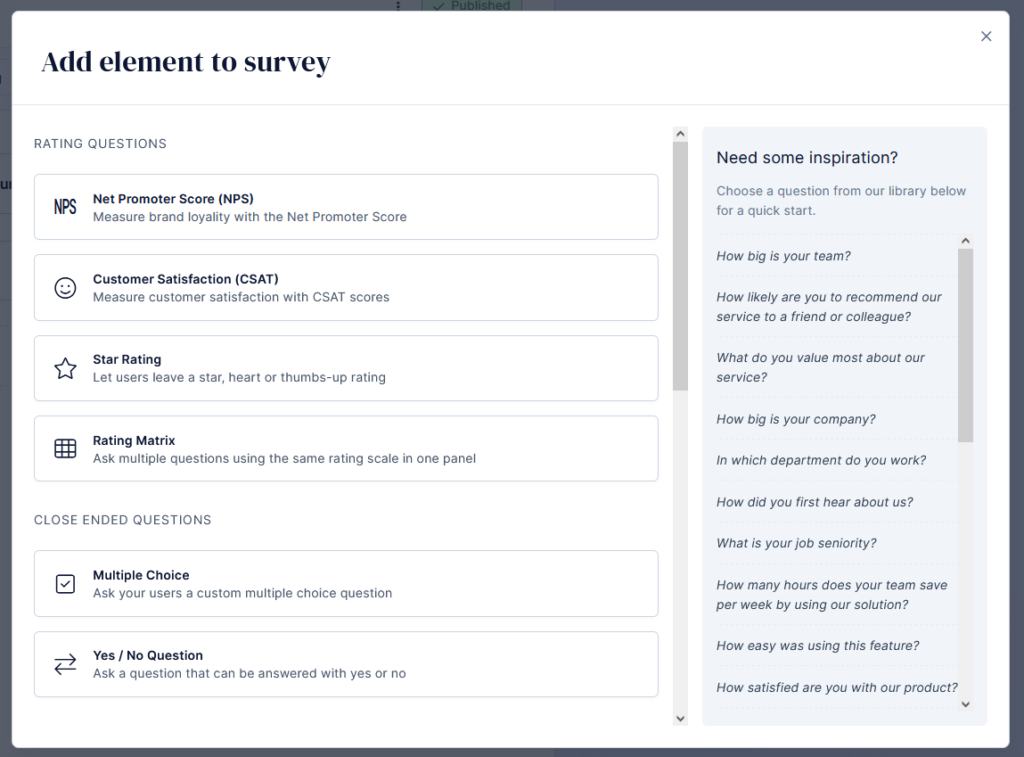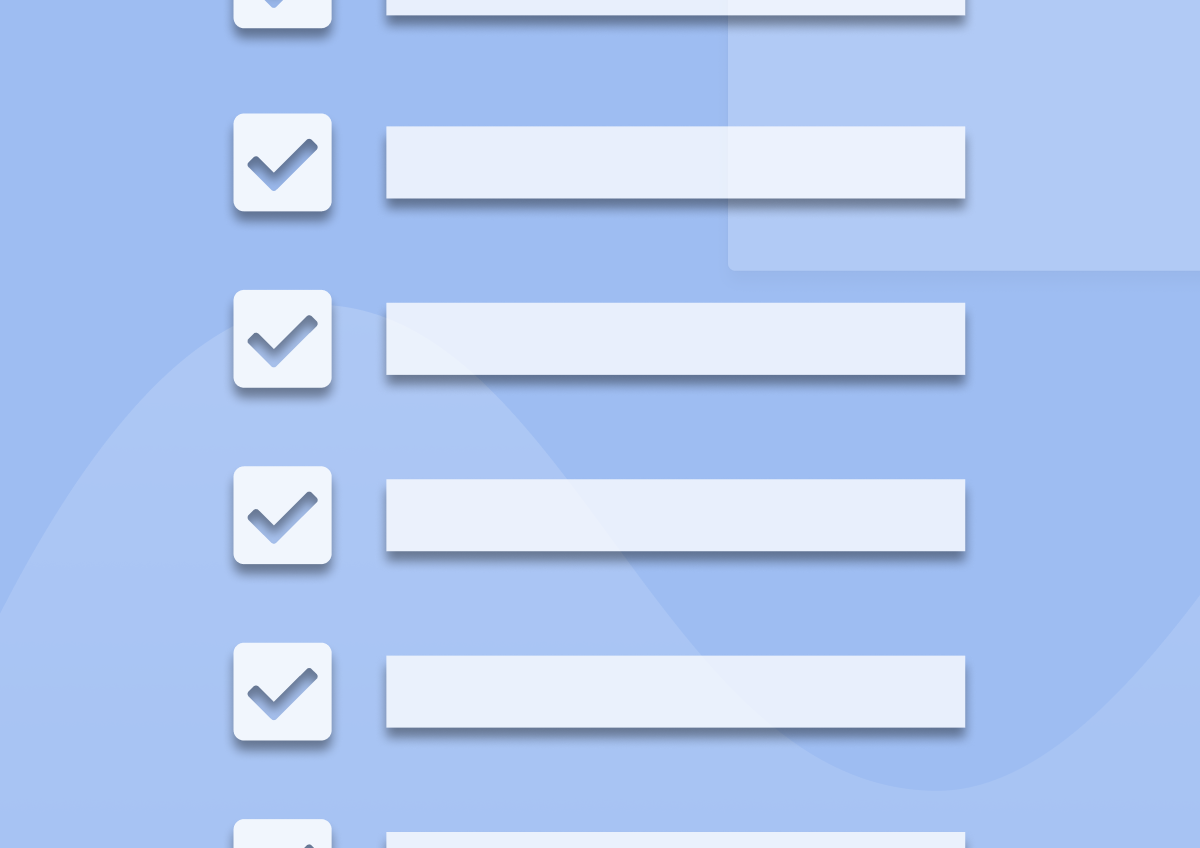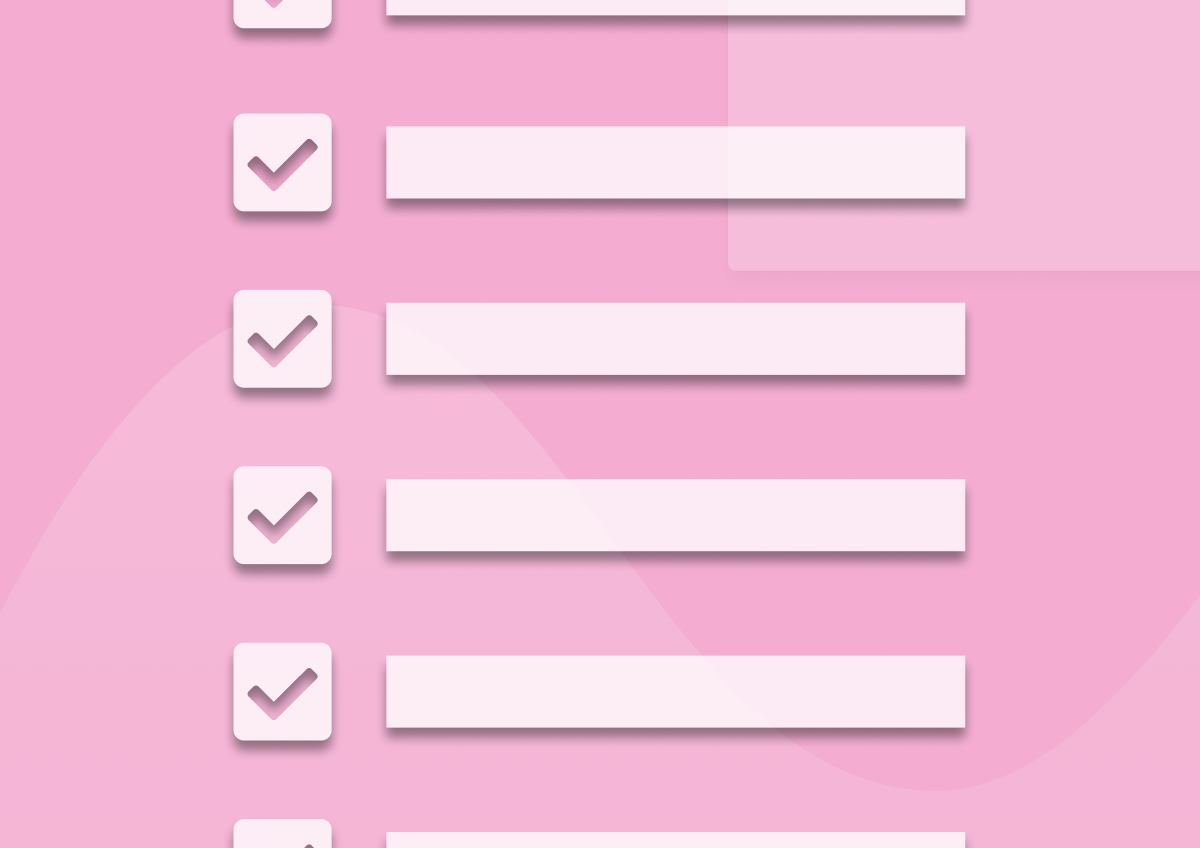15 CSAT Questions to Help Improve Your Business (with Examples)
Wondering what CSAT questions to ask to discover how satisfied customers are with your product or service?
In my last article, I discussed the ideal CSAT survey frequency to get as many responses as possible.
But that’s frequency. Their quality, however, will largely depend on the questions you ask, and that’s what I’ll help you with in this guide.
Below, you’ll discover the different types of CSAT questions you can ask to understand your customers better. What’s more, I’ll also list down the 15 best CSAT questions you can copy word-to-word to get quality responses.
Excited? Well, let’s get started, then.
What is a CSAT Survey?
A customer satisfaction (CSAT) survey is a type of customer survey that helps you understand how happy the customers are with your product, service, or experience you provide.
Typically, a CSAT survey is quite simple – both for setting up and for users to take part. The survey uses a Likert scale to measure customer satisfaction score with your product. It looks like this:

The main part of the survey requires a user to select from five emoticons indicating responses ranging from ‘Very unsatisfied’ to ‘Very satisfied.’ Because of this simple setup, answering the survey takes seconds, and you can discover your CSAT score equally quickly.
A CSAT survey can include only the rating question. However, if you want to understand better why the customers rated you the way they did, you need to ask them a follow-up question.
The purpose of the follow-up questions is to dig deeper and learn more either about the customer or find out more about their experience with your brand.
For example, you can ask a multiple-choice question like “What do you like the most about our product?” to ‘Satisfied’ and ‘Very satisfied’ customers. Those people can, then, choose from options like “Features,” “Support,” “Value for money,” etc. The answers to the question will help you understand what aspect of your product the customers like the most and where you can improve.
Similarly, asking unsatisfied customers an open-ended question like “How can we improve our product?” can provide feedback for future upgrades and help you reduce churn.
The above was an example of a CSAT survey for measuring customer satisfaction with a product.
You can use CSAT surveys to see how satisfied the customers are with different aspects of your business. For instance, you can use CSAT surveys to see how customers feel about:
- Sales interactions
- Customer service
- Customer onboarding
- Training
- Checkout
- General customer experience, and more.
How to measure CSAT score?
Typically, companies use dedicated CSAT software like Refiner to conduct surveys and measure CSAT scores.
However, you could calculate the score manually as well, and the formula for doing so is:
CSAT score = (The number of satisfied customers (i.e., people who selected option 4 or 5)/ Number of survey responses) x 100
For example, let’s assume that 100 people took the survey. Eighty-three admitted to being very satisfied or satisfied. Based on this data, we can conclude that your CSAT score is 83:
CSAT score = (83/100) x 100 = 83.
A BETTER ALTERNATIVE: Dedicated survey software like Refiner gives you instant access to a real-time reporting dashboard where you can evaluate your CSAT score, see progress over time, and review follow-up question replies.

Types of Customer Satisfaction Survey Questions Examples
Let me be upfront here – The type of CSAT survey question will determine how many people take your survey and what sort of feedback they’ll provide.
As a general rule – The lesser the friction for the user, the more the responses.
However, you can’t always ask the customer to answer the most frictionless questions. Sometimes, you need the customer to think and respond in detail to help you understand them better.
So what are your options? Well, as a matter of fact, you can use a combination of five types of customer satisfaction survey questions when constructing your survey:
- Rating (or ordinal) question: It’s the most commonly used type of question in customer surveys, whether CSAT surveys, NPS surveys or CES surveys. The user has to give a rating on a scale of 1-5 in this CSAT survey question. (For example, in the Net Promoter Score (NPS) survey, the user chooses a rating on a scale of 1-10 to show the likelihood of them recommending your product to others)
- Likert scale: A Likert scale is a 5 or 7-point scale that ranges from one extreme attitude (example: highly unsatisfied) to other (example: highly satisfied).
- Binary-scale question: This is the most frictionless type of CSAT question. The user has to choose between two options (Yes or No, 😀 or 😠, etc.).
- Multiple-choice question: Users can choose from multiple options to answer this type of question. This makes for a frictionless follow-up question type.
- Open-ended question: This type of survey question gives users the freedom to write their experiences, likes, and dislikes in detail. Because users are less likely to invest their time and give a detailed answer, this question type is generally used as a follow-up after users have committed to filling the survey (by answering one of the other four types of questions). The reason? When people commit to something, they’re likely to see it through.
PRO TIP: In Refiner, we categorized all questions by their type. To add the most relevant question to your survey, e.g., a rating question or close-ended question, you just need to navigate to the relevant category, and you’ll immediately see what questions would work best for that purpose.

15 Best CSAT Questions to Ask
Before I start listing the best CSAT questions, here’s some advice: Generic questions don’t give you the most valuable insights. The more concrete you are with your question, the better. Therefore, it’s better to run multiple survey campaigns, each with a specific question, instead of one survey campaign with a generic question.
Having said that, the below-listed won’t be the most detailed questions you can use (because a variety of SaaS founders and business owners read the Refiner blog, and details lie in the type of business). Still, the questions are concrete enough for any company to use directly or as a base.
Note, I divided the 15 example CSAT questions into two groups:
- Rating questions: These are frictionless questions that typically take seconds to answer, making customers more likely to respond.
- Follow-up questions: Only when customers commit to filling a survey, they’ll be willing to give more details/context about their response. A follow-up question takes more than a couple of seconds (sometimes even minutes) and is typically asked after a rating question.
Rating Questions
Question 1: How satisfied are you with [Product/Service]?
Question type: Rating or Likert scale
This is the most standard CSAT question. And it’s one of those questions you should frequently ask — for example, after their first time to see the initial reaction, then after a month, after a quarter or 6-months, etc.
The answers to this question give insights into how the customers feel about the product/service over time. For example, let’s say you run a SaaS company. Suppose new customers’ CSAT score for this question is lower compared to experienced users. In that case, it’s possible that new users can’t grasp the product interface, and hence you can simplify your UI or better your UX. [You’ll get the accurate details after the follow-up question, of course]
Question 2: How would you rate the support you received?
Question type: Binary or Rating
CSAT surveys after each customer support session are essential. It can uncover how individual customer support representatives perform and give insights into improving the customer support experience.
Question 3: How satisfied are you with the information you received before purchase?
Question type: Binary, Rating, or Likert scale
Use this as soon as someone makes a purchase. Sometimes, you miss vital information on your landing pages, and that can annoy people. Answers to this question will confirm whether you are missing something.
Question 4: How satisfied are you with our onboarding process?
Question type: Rating or Likert scale
First impressions last. And a smooth onboarding gives a great first impression. Know how smooth it was with this CSAT question.
If the CSAT score is under 95, there’s room for improvement.
Question 5: How satisfied are you with our help materials?
Question type: Binary, Rating, or Likert scale
If your company has a help center/FAQs/knowledge base, asking this question every time someone opens it gives insights into whether they found the answer or not. The CSAT score will also show how useful the help materials are.
Question 6: Did the product meet your expectations?
Question type: Binary
This simple binary question shows whether customers like the product or not after the first time use. Your goal with this question should be to get to as near as a CSAT score of 100.
Question 7: How easy is it to use [Product]?
Question type: Rating or Likert scale
You should ask this question after the customer’s first-time use. Then, if the CSAT score for this question is low, you can collect customer feedback and improve the product experience for the users.
Follow-up Questions
Question 8: What is your favorite feature of [Product/Service]?
Question type: Multiple-choice
To: Satisfied customers
Knowing what they like and do not like can help you better the overall experience if someone likes your product.
For example, if most users tick ‘features’ and only a few tick ‘design’ in your multiple-choice survey, then maybe you should work on the design for a flawless experience. Similarly, if provided with a list of features, you can remove it and direct your resources into improving other features if most users do not tick one of the features.
Question 9: How could we improve our product?
Question type: Open-ended
To: Unsatisfied customers
If someone rates your product unsatisfactory on the rating scale, ask them where and what you can improve. And improve.
Question 10: Would you buy another product from us?
Question type: Binary
To: Satisfied customers
You can know whether the satisfied customer is/will be a loyal customer by asking this question. If they answer ‘Yes,’ great! If ‘No,’ then maybe you can do a few things to convert them into loyal customers. For example, you can send exclusive coupons.
Question 11: What was the most memorable with the support interaction?
Question type: Multiple-choice or open-ended
To: Customer satisfied with the recent support session
Many aspects contribute to a memorable support experience. The answer to this CSAT survey question will show you what exactly it was in that particular interaction – response time, agent’s friendliness, agent’s knowledge, etc.
Question 12: How often do you use [product]?
Question type: Multiple-choice
To: Satisfied customers
Knowing the usage frequency of your product shows the value of your product in the customer’s life. It’s especially important to know the answer to this CSAT question if your business uses a recurring revenue model (example: SaaS).
Question 13: What problems do you try to solve with our product?
Question type: Open-ended
To: Satisfied customers
This CSAT survey question will give you insights into why exactly the customer uses your product. Depending on the answer, you can share relevant best practices, introduce new features, focus on bettering the most used features, etc.
For example, If our users primarily use Refiner to conduct CSAT surveys, we can share this article (the one you are reading) to help them get the best results. Or, if they share the survey only through email, we can make them aware of our in-app widget that can help them get more responses.
Question 14: What is the top feature [Product] is missing at the moment?
Question type: Open-ended or Multiple-choice
To: All users
You can ask this CSAT question after any “Do you like our product?” type question. The answers will help you collect user feedback on what more you can add.
For example, if we were just providing the email integration, our users would tick ‘in-app widget’ in a multiple-choice survey. This will lead to us prioritizing the user-demanded feature, i.e., the in-app widget.
Question 15: How would you feel if you couldn’t use [Product] anymore?
Question type: Open-ended or Likert scale
To: Satisfied customers
Ask this question to understand customer sentiment towards your product and service.
If they wouldn’t feel unhappy — and immediately jump to a competitor — perhaps there’s something you can do to build a connection. For example, customers are unhappy if a value for money option leaves the market, so you can try to be the best value for money solution out there. Similarly, you can build a community to strengthen relationships with your customers and build a relationship.
Closing Thoughts
Asking the right questions is a crucial part of CSAT surveys.
You can time the survey right and get many responses. You can give discounts and get people to answer. You can ask frictionless questions and make it easy for users to answer.
But the quality of those responses — the insights you can extract — depend only on one thing: the questions you ask.









